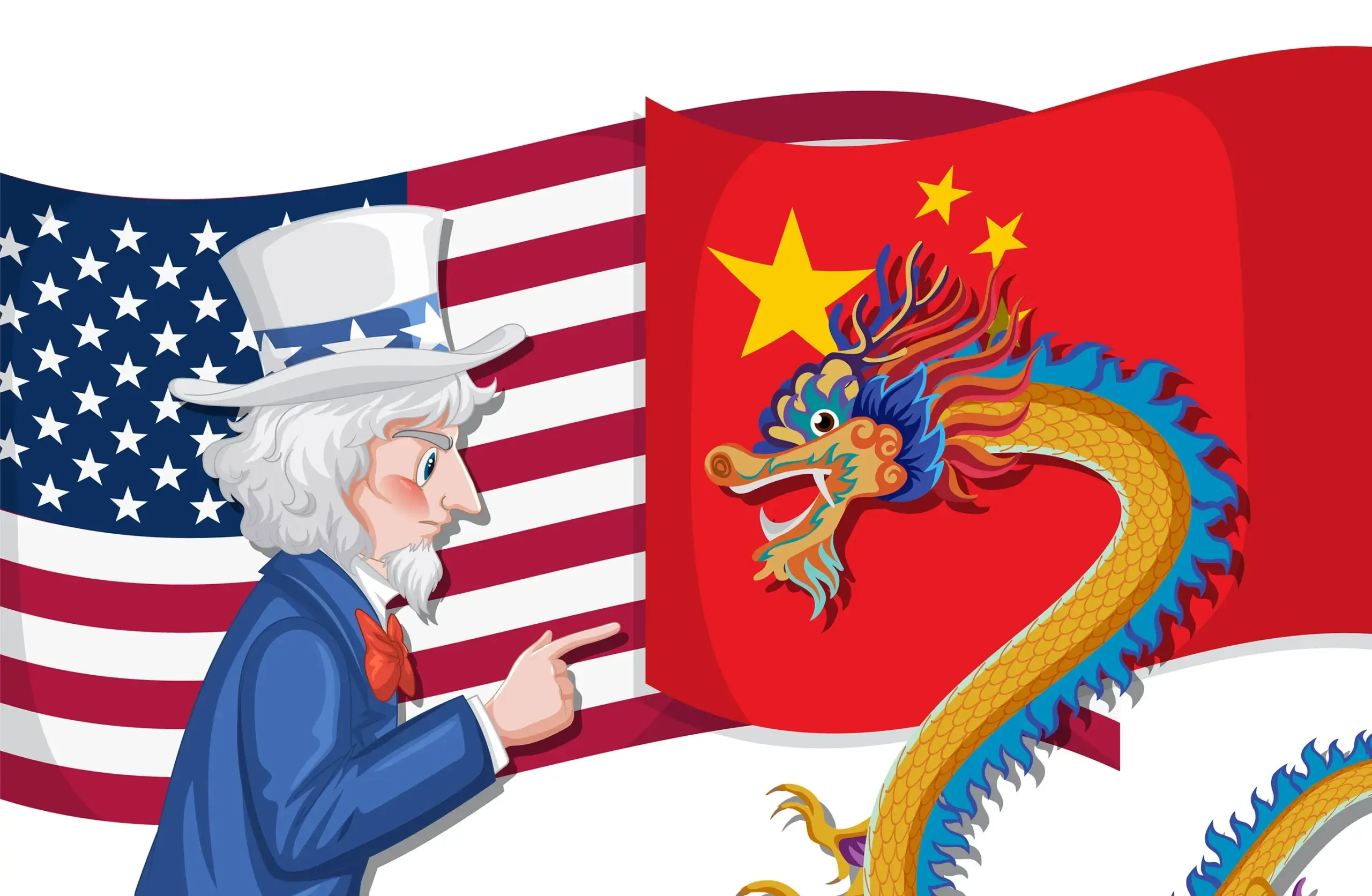China-US cargo routes are witnessing a powerful revival in 2025. After months of uncertainty, container ships traveling from China to the United States are once again fully booked, with orders surging and backlogs stretching through June . This dramatic turnaround – spurred by rising demand and recent tariff cuts – is injecting fresh energy into trans-Pacific trade. International shippers and logistics professionals are taking note as China-US cargo routes bustle with activity, signaling renewed confidence in cross-border commerce.
The resurgence of these critical trade lanes is more than a simple rebound. It underscores how quickly global supply chains can respond when market conditions improve. From tariff reductions that unleashed pent-up orders to carriers scrambling to add capacity, several factors are fueling this boom. Below we explore seven key insights into why China-US cargo routes are thriving again, and what this means for businesses engaged in international trade and logistics.
Table of Contents
- Why China-US Cargo Routes Are Booming in 2025
- Tariff Cuts Fuel Revival of China-US Cargo Routes
- Surging Demand Fills China-US Cargo Routes to Capacity
- China-US Cargo Routes Face Capacity Crunch as Shipping Rates Soar
- Industry Response: Ramping Up Capacity on China-US Cargo Routes
- Policy Support and Cooperation Reinforce Trade
- Conclusion: Outlook for China-US Cargo Routes
Why China-US Cargo Routes Are Booming in 2025
The year 2025 has brought a resurgence in China-US cargo routes, driven by a potent combination of market demand and policy shifts. In early 2025, many U.S. importers hit the brakes on orders when new tariff hikes were announced. Rather than canceling contracts, a large number of companies delayed their purchasing plans until conditions improved . That improvement came swiftly: on May 12, China and the United States agreed to mutually lower certain tariffs, instantly brightening the outlook for bilateral trade. This policy relief triggered a wave of previously hesitant buyers to resume placing orders with Chinese suppliers . Within weeks, order volumes that had been in limbo roared back to life, and ships began filling up fast.
Pent-up demand from earlier in the year is now being released on the China-US cargo routes. Forwarders and shipping executives report a notable uptick in bookings as American retailers and manufacturers rush to restock inventories. The psychological boost of tariff de-escalation has renewed confidence among businesses on both sides of the Pacific. What we are witnessing is a classic rebound effect: when uncertainty recedes, normal trade can flourish again. This sets the stage for one of the busiest seasons on the China-U.S. trade lanes in recent memory.
Tariff Cuts Fuel Revival of China-US Cargo Routes
Trade policy changes have played a critical role in revitalizing China-US cargo routes. The mutual decision by Beijing and Washington to temporarily reduce tariffs in May acted as a green light for commerce. For much of the past few years, elevated tariffs added friction to China-U.S. trade, dampening the flow of goods. The announcement of tariff reductions mid-May 2025 provided immediate relief to importers and exporters, effectively slashing costs on a range of products. Many companies that had been cautious or pessimistic suddenly had a reason to move forward with orders.
According to industry observers, this tariff truce released a backlog of demand almost overnight. “As China and the US agreed to lower tariff rates, many US businesses promptly resumed placing orders with Chinese suppliers,” noted one logistics executive . Products that were previously deemed too expensive due to duties became viable again, prompting buyers to act quickly to secure inventory. The result was a surge of new bookings on container vessels bound for U.S. ports.
Equally important, the tariff cuts signaled a thaw in trade tensions, improving sentiment in the logistics sector. Shipping companies that had braced for a slowdown are now seeing a revival of orders. Tariff relief has effectively energized the China-US cargo routes, underscoring how closely trade volumes are tied to policy. For logistics professionals, this serves as a reminder that staying agile and informed about trade policy shifts is crucial – a sudden tariff change can flip demand dynamics in a matter of weeks.
Surging Demand Fills China-US Cargo Routes to Capacity
Demand on the China-US cargo routes has rebounded so strongly that ships are running at full capacity. By late May, container vessels leaving Chinese ports for the U.S. were fully booked, with space sold out weeks in advance . Freight forwarders report that orders are lined up through June, reflecting how quickly U.S. importers returned to the market once conditions improved. This rush of cargo has created tight space on ships, and carriers are finding it challenging to accommodate every booking.
One striking indicator of surging demand is the spike in freight indices and port throughput volumes. At Ningbo-Zhoushan – one of China’s busiest container ports – the weekly freight index for U.S. East Coast routes jumped to 2,490 points in the final week of May, up 69.7% from the previous week . For the U.S. West Coast route, the index soared even higher to 3,585 points, an 89.2% surge week-on-week . These jumps, reported by the Ningbo Shipping Exchange, illustrate just how sudden and significant the rebound has been.
A COSCO Shipping container vessel departing Shanghai, illustrating the revival of China-US cargo routes in 2025. Chinese ports have seen a surge in fully-loaded ships bound for the U.S., as export orders return in force.
Further evidence comes from Shanghai’s port, another major gateway for trans-Pacific trade. In the week of May 19–25, the Port of Shanghai handled 59,000 containers destined for the U.S., a remarkable 49.4% increase over the prior week . This kind of double-digit weekly growth in volume is rare, and it underscores the pent-up demand now flowing through. Port officials confirmed that all previously suspended U.S.-bound sailings have been resumed to meet the demand, bringing the weekly number of voyages back to a normal level of 42 sailings . Clearly, the China-US cargo routes are bustling, with terminals and ships operating at full steam to keep goods moving.
China-US Cargo Routes Face Capacity Crunch as Shipping Rates Soar
The flip side of booming demand is that shipping rates are skyrocketing on the China-U.S. trade lanes. With so much cargo chasing limited vessel space, transport costs have shot up sharply. Forwarders are reporting that spot rates for container shipments have more than doubled from their lows earlier in the year. Ningbo Customs data shows shipping companies now charging over $6,000 per 40-foot container to the U.S. West Coast, and more than $8,000 per container to the East Coast . These figures are a dramatic increase, reflecting the capacity crunch that has emerged.
The current rate spike is partly a result of carriers having pulled capacity out of the China-US routes during the recent slowdown. In April, when freight volumes plummeted due to tariff worries, many shipping lines canceled U.S.-bound sailings and redeployed ships to other regional routes . This meant fewer vessels were available when demand came roaring back, creating a short-term mismatch between supply and demand. As one industry executive explained, now that cargo volumes have rebounded, “the capacity situation has quickly reversed” – ships are in short supply just as everyone needs space.
For logistics professionals, these high rates and tight space mean it’s more important than ever to plan shipments early and secure bookings in advance. The good news is that carriers are responding (as we discuss next), but in the interim, China-US cargo routes are commanding premium prices. Companies importing from China need to budget for elevated freight costs in the near term or negotiate long-term contracts to lock in more stable rates. On the export side, Chinese manufacturers are racing to get products on vessels despite the higher costs, since strong U.S. demand makes it worthwhile.
Industry Response: Ramping Up Capacity on China-US Cargo Routes
Shipping lines and logistics providers are actively responding to the surge by adding capacity back onto China-US cargo routes. After weeks of underutilization in April, carriers like Maersk, COSCO, Hapag-Lloyd, and CMA CGM have pivoted to meet renewed demand. For example, Maersk began ramping up its China-U.S. capacity in mid-May, and the number of bookings continues to rise steadily, according to the company’s China managing director . Similarly, other major global carriers report a notable upswing in U.S.-bound bookings for June .
The reactivation of capacity includes reinstating previously canceled sailings and even deploying extra loaders (additional ships) on trans-Pacific routes. By late May, virtually all suspended U.S.-bound voyages had resumed, returning service frequencies to normal levels . Shipping companies are “working hard to allocate capacity and increase space availability” to catch up with the demand . However, there is a lag time – some vessels are still repositioning back across the Pacific after being moved to other trade lanes, which means shippers may face a few weeks of tight space until fleets are realigned.
It’s worth noting that during the lull in China-U.S. trade earlier in 2025, carriers didn’t sit idle; many shifted focus to other growing markets. As one shipping executive observed, when trans-Pacific volumes dipped, there was a significant jump in cargo from China to Latin America, Africa, Southeast Asia, and the Middle East . This flexibility helped offset losses on the U.S. route and kept ships utilized elsewhere. Now, with China-U.S. trade roaring back, those same carriers are rebalancing once more. For logistics professionals, this highlights the global nature of shipping networks – capacity is fluid and can shift quickly in response to regional demand swings.
Meanwhile, freight forwarders are coordinating with clients to navigate this rapid rebound. Many are advising shippers on alternative routes or schedules to avoid the worst of the capacity crunch. Companies with high volumes are considering chartering additional vessels or splitting shipments across multiple sailings. China-US cargo routes remain the backbone of many global supply chains, so ensuring reliable flow on this corridor is a top priority for the industry.
For strategies to manage sudden changes in shipping conditions, see our guide on Building Resilient Supply Chains for tips on navigating capacity crunches and volatile transport costs.
Policy Support and Cooperation Reinforce Trade
Beyond market forces, recent policy decisions have provided support to the thriving China-US cargo routes. In addition to the bilateral tariff reductions, the United States has extended certain import tariff exclusions that were set to expire. In late May, the Office of the U.S. Trade Representative announced an extension of Section 301 tariff exemptions on various Chinese goods through August 31, 2025 . This move affects critical items – for example, solar panels and medical equipment – allowing them to continue entering the U.S. duty-free. By maintaining these exclusions, U.S. officials aim to prevent supply chain disruptions and keep domestic industries well-supplied .
These policy actions send a positive signal to companies engaged in trans-Pacific trade. They indicate a willingness by both governments to stabilize the trading environment and reduce costs for businesses. For shippers, fewer tariff barriers and extended exemptions mean more predictability when sourcing from China. It encourages long-term planning and investment, as the risk of sudden cost spikes is reduced. In short, the policy climate in mid-2025 is far more supportive of U.S.-China commerce than it was in previous years of high tensions.
Perhaps equally important is the improving spirit of cooperation evident between the two trading partners. The very fact that China and the U.S. could agree on tariff relief – even if temporary – suggests a mutual recognition of the benefits of trade. Industry experts note that the surge in China-US cargo routes reflects a shared belief among businesses on both sides that mutually beneficial cooperation remains the cornerstone of their relationship . Despite political differences, the demand for each other’s products and the intertwined nature of supply chains keep pulling the two economies together. This resilience of commercial ties bodes well for the future of freight movement across the Pacific.
From a logistics perspective, policy and cooperation translate into tangible operational improvements: smoother customs clearances, less red tape, and more consistent trade policies. Forwarders and trade compliance managers are cautiously optimistic that we may see further easing of tariffs or at least stability in the current measures. The events of 2025 have shown that when trade policies become more favorable, the logistics sector can surge ahead rapidly to capitalize on the opportunity.
Conclusion: Outlook for China-US Cargo Routes
The strong revival of China-US cargo routes in 2025 marks a hopeful chapter for global trade. With demand recovering and tariffs eased, the volume of goods flowing between the world’s two largest economies is climbing once more. Shipping companies are racing to realign capacity, and ports in both countries are handling more containers as a result. For international trade and logistics professionals, this is a welcome development – it means more business, but also new challenges in managing capacity and costs.
In the near term, analysts expect the North American trade lanes to remain busy through June and beyond, assuming economic conditions stay on track . Retailers in the U.S. are replenishing inventories, and manufacturers are catching up on orders that were on hold. The logistics industry will likely continue to see elevated freight rates until sufficient capacity is fully restored on the China-US routes. However, as more ships return to this corridor and perhaps new services are added, the pressure should gradually ease.
Looking further ahead, the 2025 boom could pave the way for a period of steadier growth in China-U.S. trade. The recent rebound underscores the resilience and adaptability of supply chains linking the two nations. It also highlights how cooperation and sensible policies can directly boost trade volumes. Companies that weathered the storm by diversifying or pausing activity are now reaping the rewards of resurgence.
International logistics professionals can draw several lessons from this episode:
- Stay agile and informed: Policy changes like tariffs can dramatically alter cargo flows; having contingency plans is key.
- Build flexible supply chains: The ability to reroute shipments (as carriers did to other regions) can buffer against downturns on any single route.
- Plan for volatility in freight rates: Budgeting for rate spikes or securing contracts in advance can mitigate cost impacts during sudden booms.
- Leverage positive trends: When trade rebounds, be ready to capitalize on increased volumes – whether by negotiating better carrier terms or expanding services.
In summary, the bustling China-US cargo routes of 2025 demonstrate that even after setbacks, trade finds a way to rebound when given the right conditions. As long as demand stays robust and policies remain supportive, the outlook for these crucial routes is overwhelmingly positive. The revival we are witnessing now could be the foundation for the next wave of growth in trans-Pacific logistics, benefiting businesses and consumers on both sides of the ocean.
External Source: For more details on this development, see the original China Daily report that inspired this analysis. China-US cargo routes are set to stay in focus as a barometer of global trade health in the months to come.
Need Help Shipping Between China and the US?
At Falcon Cargo, we specialize in reliable, cost-effective freight solutions for China–US routes — whether it’s oversized machinery or urgent air cargo.
👉 Get a custom quote today — and let us handle the complexity, so you can focus on growing your business.
📩 Contact Falcon Cargo or email us at sales@falconcargo.net



